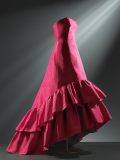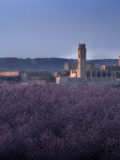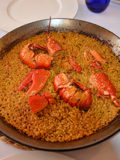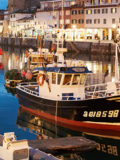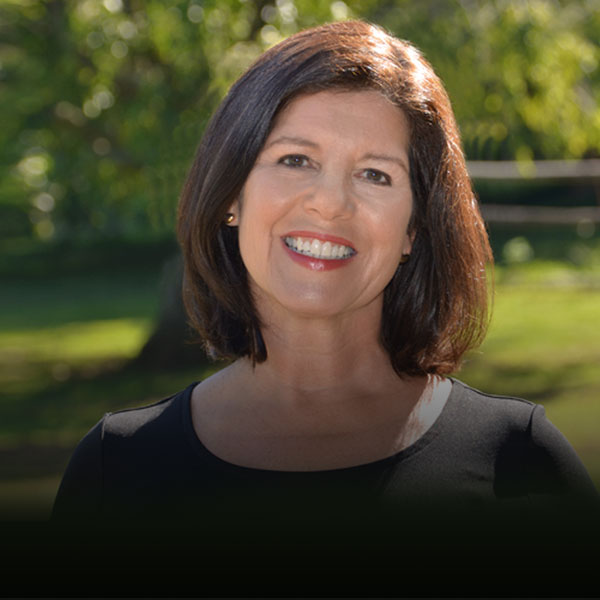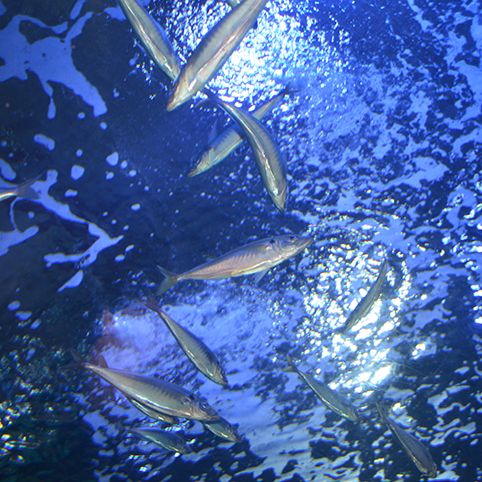
By Carolyn Worthington
Day 4
We’ve explored the local markets, taste tested the pintxos, explored a fashion museum, and had over-the-top meals.
Today, let’s explore the natural environment of San Sebastian and immerse ourselves in one of the city’s most natural resources—the sea.
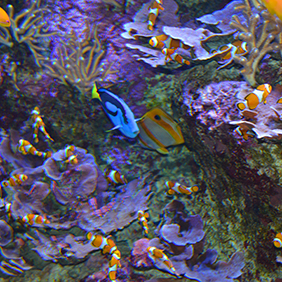
One of many fish tanks of colorful fish. Photo: C. Worthington
The San Sebastian Aquarium
You don’t have to be a kid to be mesmerized by the almost-one-century-old San Sebastian Aquarium. The stunning view alone of the harbor is worth the trip. Refurbished in 2008, the two-story building houses numerous tanks of more than 200 species, primarily from the Bay of Biscay.
Get swallowed up in the 360-degree whopper of a fish tank. You will be humming “Under the Sea” as you walk though this tunnel surrounded by sea life. By appointment, you can even swim with the fish in one of the tanks.
I did not try this!
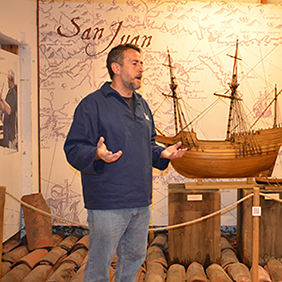 Albaola Naval Factory
Albaola Naval Factory
Part two of your seafaring day is a visit to the Albaola Naval Factory built on a shipyard and converted into a museum. Just two-and-a-half miles from center city of San Sebastian, this is a fun and easy-to-get-to excursion. And you can even go by boat. You can park your car for free at Hospitalillo in Trintxerpe and take the 10-minute ride.
The mission of the Albaola Naval Factory is to keep the Basque Maritime heritage and accomplishments of Basque seaman alive. Today, a small team of dedicated mariners follow this quest in the impressive boat “working museum” building.
Nautical craftsmanship and technology are on full display here as the passionate boat builders tirelessly research, recover, and showcase the nautical craftsmanship of bygone eras.
This “sea factory of the Basques” is filled with exhibits and a great hall workshop where visitors can watch the boat builders in action. The crew are building a historical replica of the 1563 whaling ship San Juan and you can have a bird’s eye view as they work. Complementing the boat construction is an exhibit that takes you through the epic times of 16th century whale hunting when Pasaia was the main whaling port of Europe. For centuries, expeditions set sail from h ere toward Newfoundland.
ere toward Newfoundland.
Albaola is more than an international boatbuilding school attracting students from many different countries. On the day of my visit, a young American was busy working on a fishing boat replica in the massive workshop.
I learned on this visit that the people of the Basque region are very proud of their area, historical accomplishments, and culture enhanced by the sea.
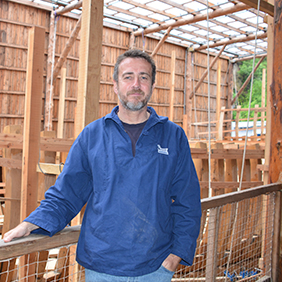
Xabi Agote. Photo: C. Worthington
There is no better spokesperson for the Basque seafarers than Xabi Agote, 51, who grew up in San Sebastian. He now manages and carries the torch and for the Basque lore.
“When I was a kid, 9 or 10, I would go to the pier to fish. There were a lot of fishing back then. Women were sewing nets, the fish were being sold,” he said. “But, when I was 18, I realized all the wooden boats that I knew had disappeared. I decided then to become a boat builder.”
“I found a boat-building course on French television that was taking place in Maine,” he said. And so, he traveled to Maine and became an “apprentice” at the Maine Maritime Museum in Bath, Maine.
As part of his apprenticeship in Maine, he was asked to help build a replica of a Basque boat. The boat was meant to stay in Maine. He decided to buy it and bring it back to Spain. After much fund-raising through clubs promoting Basque culture, such as Euskal Etxea and Basque House, his dream came true. The boat was brought to Spain and launched the beginning of the museum in 2014. Last year, 38,000 visitors came here.
Agote plans to sail his 16th century boat from Pasaia to North America. Agote’s dream is to change the history books. He is convinced that the Basque sailors arrived in the U.S. before the French, and he is determined to prove it.
“We plan to finish this boat and set sail by 2017,” he said with tremendous passion. By the looks of the enthusiastic team he has put together there, I believe he will do it.
Lunch at Mirador de Ulia, One Star Michelin
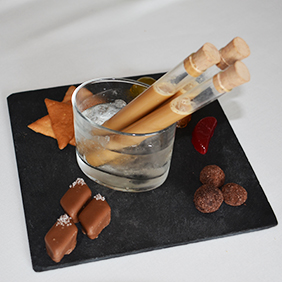
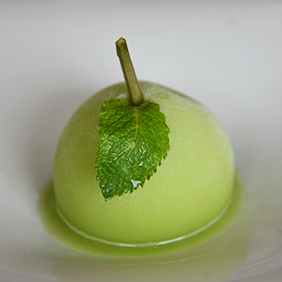 Chef Reben Trincado is the innovative chef of Mirador de Ulia who combines the traditional recipes of his childhood with as he says, “Avante garde techniques to surprise diners with the creations on their plates.” A jovial chef, he is passionate about his craft while being humble about his accomplishments.
Chef Reben Trincado is the innovative chef of Mirador de Ulia who combines the traditional recipes of his childhood with as he says, “Avante garde techniques to surprise diners with the creations on their plates.” A jovial chef, he is passionate about his craft while being humble about his accomplishments.
The restaurant received a Michelin star in 2010 and the ever-smiling Trincado is quick to say “it was a team effort.”
On any given day, you will be surprised and delighted by the chef’s creations while soaking in the outrageous view overlooking Zurriola beach.
Your dinner might include oysters with pickled vegetables, marinated sardines, hake with pistachio praline, and duck with glazed apple. Or, perhaps, you might choose pigeon stew. I was surprised by the amazing details like the cappuccino served in test tubes and “manzana a la sidra” (a creative apple confection with lots of eye appeal).
 Cider House Rules … Finish Off the Tour with Dinner and Drinks at a Traditional Cider House
Cider House Rules … Finish Off the Tour with Dinner and Drinks at a Traditional Cider House
You cannot leave the Basque region without tasting the local cider, one of the trademarks of the area. Tucked into the hillsides around San Sebastian are charming cider houses that offer the delicious, relatively low alcohol beverage, bistro fare, and yet another opportunity to rub shoulders with the locals.
My last stop of the four-day tour was to the Petritegi cider house named for the farmhouse press built in the early 1500s. Built around the massive cider press, “The house of Petri” has been family owned for over 500 years. Today, Petritgi is owned by the Gipuzkoa family who took the reins in the early 20th century.
Grab a glass and head to the oversized barrels, or kupelas, and pour your own cider. Sit at the long tables family style and sip your cider with cider house menu selections like fried green peppers, charcoal-grilled beef rib chop, quince jelly, and walnuts for dessert.
Raise your glass and toast to the best four days ever exploring the best of San Sebastian.




